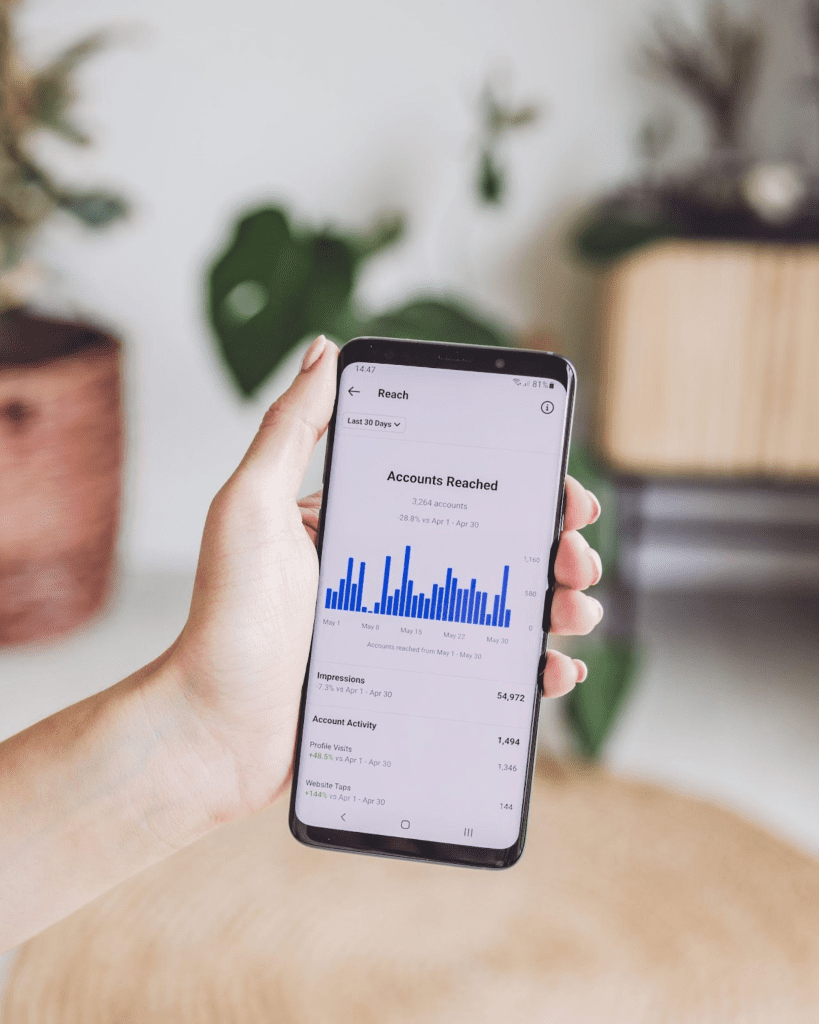Our smartphones in today’s world have become extensions of ourselves, serving as portals to a world of information, services, and experiences. It’s no surprise then, that ensuring your website is not only accessible but excels on these mobile devices has become paramount. Welcome to a guide dedicated to the art of Mobile Optimization—a practice that goes beyond mere adaptation but strives for seamless interaction and unparalleled user engagement.
In an era where a split-second delay can translate into lost interest, and where search engines favor mobile-friendly experiences, the significance of mobile optimization cannot be overstated. The lines between desktop and mobile browsing have blurred, making it imperative for websites to transcend the confines of traditional screens and cater to the ever-expanding universe of handheld devices.
In this comprehensive guide, we will explore the core principles and actionable strategies that empower your website to not only meet but exceed user expectations on mobile platforms. From the technical nuances of responsive design to the finesse of content readability, each facet of mobile optimization will be dissected, offering you a roadmap towards a truly mobile-friendly digital presence.
Introduction to Mobile Optimization
The emphasis on the significance of mobile optimization in today’s digital landscape. It underscores the shift towards mobile devices as the primary means of accessing the digital world and emphasizes the critical importance of ensuring that websites are not only accessible but also optimized for mobile devices. The passage also emphasizes that mobile optimization goes beyond technical adjustments; it is a strategic imperative aimed at providing users with a seamless and engaging experience.
Additionally, it highlights the potential consequences of neglecting mobile optimization, including frustrating and disengaging a significant portion of the audience. The passage invites both experienced webmasters and beginners to join in the exploration of mobile optimization, promising insights and strategies to transform websites into mobile-friendly powerhouses that excel in user experience. The overall tone is motivational and forward-looking, encouraging readers to embark on a journey towards mobile optimization excellence.
Why Mobile-Friendly Websites Matter
- User Expectations: With the prevalence of smartphones, users anticipate websites to operate smoothly on their mobile devices. A website optimized for mobile ensures that visitors can access content, navigate, and interact without encountering any frustrations.
- Search Engine Rankings: Search engines, including Google, prioritize websites that are mobile-friendly in their rankings. Sites lacking mobile optimization may experience lower visibility in search results, potentially leading to a decline in organic traffic.
- Enhanced User Experience: A mobile-friendly website delivers an excellent user experience. It adjusts seamlessly to diverse screen sizes, loads swiftly, and provides intuitive navigation, resulting in heightened user satisfaction and prolonged engagement on the site.
- Expanded Audience Reach: Given the global surge in mobile device usage, a mobile-friendly website enables you to connect with a broader audience. It caters to users who predominantly access the internet via their smartphones, ensuring you don’t overlook potential customers.
- Decreased Bounce Rates: An inadequately optimized website can lead to elevated bounce rates, as users swiftly exit due to frustrations with sluggish loading times or challenging navigation. Mobile optimization aids in retaining visitors and sustaining their engagement.
- Competitive Edge: In a fiercely competitive online environment, possessing a mobile-friendly website is now a fundamental prerequisite. It not only meets user expectations but also differentiates you from competitors who may not have prioritized mobile optimization.
- Localized SEO and Geo-Targeting: Mobile devices are frequently employed for location-specific searches. A mobile-friendly website can enhance local SEO, making it simpler for potential customers to discover and engage with your business.
- Brand Image: A mobile-friendly website reflects positively on your brand’s image. It demonstrates your commitment to delivering a user-friendly experience and accessible content, which can bolster brand trust and foster customer loyalty.
Mobile-friendly websites are no longer a choice but an essential element of a thriving online presence. They elevate the user experience, have a positive influence on search rankings, and ensure you connect with a wider audience. Prioritizing mobile optimization is a strategic decision that directly influences your website’s effectiveness and, consequently, your overall success in the online realm.
User Expectation on Mobile

Always remember to refer to the set of expectations and requirements that users have when interacting with mobile applications or websites on their mobile devices, such as smartphones and tablets. These expectations are shaped by their previous experiences with mobile technology and applications, as well as general usability and design principles. Meeting user expectations is crucial for the success and user satisfaction of mobile apps and websites.
- Responsiveness: Users expect mobile apps and websites to be responsive and load quickly on their devices. Slow loading times or unresponsive interfaces can lead to frustration and a poor user experience.
- Intuitive Navigation: Mobile apps and websites should have clear and intuitive navigation menus and interfaces. Users should be able to easily find what they’re looking for and navigate between different sections of the app or website.
- Consistency: Users expect consistency in design, layout, and functionality across different screens and platforms (iOS, Android, web). Inconsistent design or behavior can confuse users.
- Mobile-Friendly Design: Users expect mobile apps and websites to be designed with mobile devices in mind. This includes using responsive design techniques, optimizing images for mobile screens, and ensuring that text is legible on smaller screens.
- Performance: Users expect mobile apps to perform well, which includes smooth animations and transitions, as well as efficient use of battery and data.
- Security: Users have high expectations for the security of their data and transactions on mobile apps. They expect their personal information to be protected, and they want to be informed about security measures in place.
- Offline Access: Many users expect some level of offline access or functionality in mobile apps. Apps that rely heavily on internet connectivity should handle offline scenarios gracefully.
- Personalization: Users appreciate apps that offer personalized experiences. They expect recommendations, customized content, and settings that cater to their preferences.
- Accessibility: Users with disabilities have expectations regarding accessibility features, such as screen readers, voice commands, and text-to-speech capabilities.
- Regular Updates: Users often expect mobile apps to receive regular updates to fix bugs, introduce new features, and adapt to changes in the operating system or devices.
- Feedback and Support: Users expect a way to provide feedback and access to customer support if they encounter issues or have questions.
- Privacy: Users expect transparency regarding how their data is collected, used, and shared. They often expect options to control their privacy settings.
Importance of Quick Load Times

Quick load times are of paramount importance in the digital landscape. They are the linchpin of a positive user experience, affecting user retention, engagement, and satisfaction. A fast-loading website or application not only keeps users engaged but also significantly impacts SEO rankings, leading to greater visibility and organic traffic.
Furthermore, in an era where mobile usage is prevalent, ensuring quick load times is imperative, as mobile users have less patience for slow-loading content. Quick load times translate to lower bounce rates, higher conversion rates, and cost efficiency through reduced server and bandwidth costs. They also provide a competitive advantage by setting your platform apart in competitive markets. In essence, the speed at which your content loads directly influence user behavior, business outcomes, and the overall success of your digital presence.
Smooth Functionality on Mobile Devices

Smooth functionality on mobile devices is a vital component in crafting a favorable user experience and securing the triumph of mobile applications and websites. The importance of this seamless operation cannot be overstated. A fluid user experience, devoid of lag, glitches, or crashes, is the cornerstone of user satisfaction and retention. Mobile users, especially, are more inclined to engage with platforms offering this smooth functionality, as it encourages them to explore further, interact with content, and linger longer.
For e-commerce apps and websites, the connection between smooth functionality and conversion rates is direct; users are more likely to complete transactions when technical obstacles are absent. Moreover, a consistent delivery of smooth functionality contributes to a positive brand reputation, underlining professionalism and reliability and fostering trust. It also effectively mitigates user frustration and attrition, reducing bounce rates and bolstering user satisfaction. Achieving compatibility across a diverse spectrum of mobile devices, screen sizes, and operating systems is imperative for reaching a broad user base. Furthermore, in a competitive market, a platform that excels in this regard gains a distinct competitive edge, enticing users with an enhanced and enjoyable experience.
Smooth functionality positively impacts app store ratings and reviews, steering clear of the negative consequences that poor functionality can bring. It promotes app retention, as users are more inclined to retain apps that consistently deliver a smooth experience while swiftly dismissing those plagued by crashes and performance issues. Ultimately, a consistently smooth user experience cultivates user loyalty, encouraging return visits, regular engagement, and user referrals. To sustain this functionality, ongoing support and maintenance are indispensable, with regular updates and bug fixes essential to address emerging issues and adapt to the ever-evolving mobile landscape.
In summary, the quest for smooth functionality on mobile devices stands as a foundational objective for any mobile app or website. It exerts a profound influence on user experience, engagement, conversion rates, brand reputation, and long-term prosperity. Investment in quality assurance, rigorous testing, and a commitment to continuous improvement is the bedrock for delivering and perpetuating a seamless user experience on mobile platforms.
Search Engine Rankings and Mobile-Friendliness

Search engine rankings and mobile friendliness are closely intertwined in the world of online visibility. When search engines like Google determine how websites should be ranked in search results, they consider the mobile friendliness of those sites. Mobile friendliness refers to how well a website performs and appears on mobile devices, such as smartphones and tablets. Websites that are mobile-friendly are designed to provide a smooth and responsive user experience on smaller screens and touch interfaces.
Now, why does this matter for search engine rankings? Well, search engines are highly focused on delivering a good user experience to their users. Since a significant portion of internet traffic comes from mobile devices, search engines prioritize websites that are mobile-friendly. If your website isn’t mobile-friendly, it may not rank as high in search results. Lower rankings mean your website may not be as visible to users when they search for relevant keywords or topics, which can negatively impact your website’s traffic and overall online presence.
So, in a nutshell, ensuring that your website is mobile-friendly is not just about catering to mobile users; it’s also about staying competitive in search engine rankings and increasing your chances of being discovered by a broader audience. Mobile friendliness has become a crucial aspect of effective digital marketing and search engine optimization strategies.
Reaching a Wider Audience with Mobile Optimization

Mobile optimization is the practice of tailoring your digital content, such as websites, apps, or emails, to deliver an exceptional user experience on mobile devices like smartphones and tablets. It’s all about making sure that your online presence functions smoothly, loads quickly, and looks great on smaller screens and touch interfaces. But why is this important? Well, mobile devices have become the primary means of accessing the internet for many people around the world. By optimizing for mobile, you’re essentially opening the door to a much larger audience.
Here’s how it works: When your digital content is mobile-friendly, it becomes accessible to a broader range of users. Whether someone is on their daily commute, waiting in a queue, or relaxing at home with their phone, they can easily engage with your content. This accessibility not only enhances user satisfaction but also extends your reach to potential customers or readers who prefer or exclusively use mobile devices.
Moreover, mobile optimization plays a pivotal role in search engine rankings. Search engines like Google consider mobile friendliness as a key factor when determining the position of websites in search results. So, if your content isn’t mobile optimized, it may not rank as high in search listings, which could limit your visibility to users searching for related topics or products.
Tips for Mobile Optimization

Optimizing your website or app for mobile devices is essential in today’s digital landscape, where mobile users make up a significant portion of internet traffic. Here are some tips for effective mobile optimization:
- Responsive Design: Implement responsive web design to ensure that your website adapts seamlessly to different screen sizes and orientations. This approach provides a consistent and user-friendly experience across all devices, from smartphones to tablets.
- Fast Loading Times: Optimize your website for fast loading times on mobile devices. This includes compressing images, minimizing HTTP requests, and using browser caching to reduce load times. Mobile users have little patience for slow-loading pages.
- Mobile-Friendly Navigation: Simplify your website’s navigation for mobile users. Use mobile-friendly menus, buttons, and navigation elements that are easy to access and use on smaller screens. Consider a “hamburger” menu or other thumb-friendly design choices.
- Content Prioritization: Prioritize your most important content and calls to action for mobile users. Keep critical information near the top of the page to ensure its visible without the need for excessive scrolling.
- Touch-Friendly Elements: Ensure that interactive elements, such as buttons and links, are large enough and spaced adequately to accommodate touch gestures. This improves usability and reduces the risk of accidental clicks.
By focusing on these key areas of mobile optimization, you can enhance the mobile user experience, improve your website’s performance, and effectively reach and engage your mobile audience.
Conclusion
Ensuring that your website is mobile-friendly is no longer an option; it’s a necessity in today’s digital landscape. With an ever-increasing number of users accessing websites and content through mobile devices, mobile friendliness has become synonymous with good user engagement practices. When your website is optimized for mobile, you provide a seamless and satisfying experience for a broad range of users, regardless of their device.
A mobile-friendly website not only loads quickly and looks great on small screens but also offers intuitive navigation and touch-friendly design elements. This results in higher user engagement, reduced bounce rates, and increased user satisfaction. Visitors are more likely to explore your content, interact with your offerings, and even convert into customers or subscribers when they have a positive mobile experience.
Moreover, search engines like Google reward mobile-friendly websites with higher rankings in mobile search results, further emphasizing the importance of mobile optimization for visibility and discoverability. In contrast, a website that neglects mobile-friendliness risks alienating a significant portion of its potential audience and may suffer from decreased traffic and user engagement.
Therefore, the message is clear: prioritize mobile friendliness as a core aspect of your web design and optimization strategy. Continuously test and improve your website’s mobile performance, adapt to emerging technologies, and stay attuned to user preferences. By doing so, you not only enhance user engagement but also position your website for success in an increasingly mobile-centric digital world.
This article is proudly sponsored by Vonza.com-The best online community platform for creators and entrepreneurs. Kickstart your free trial today!

